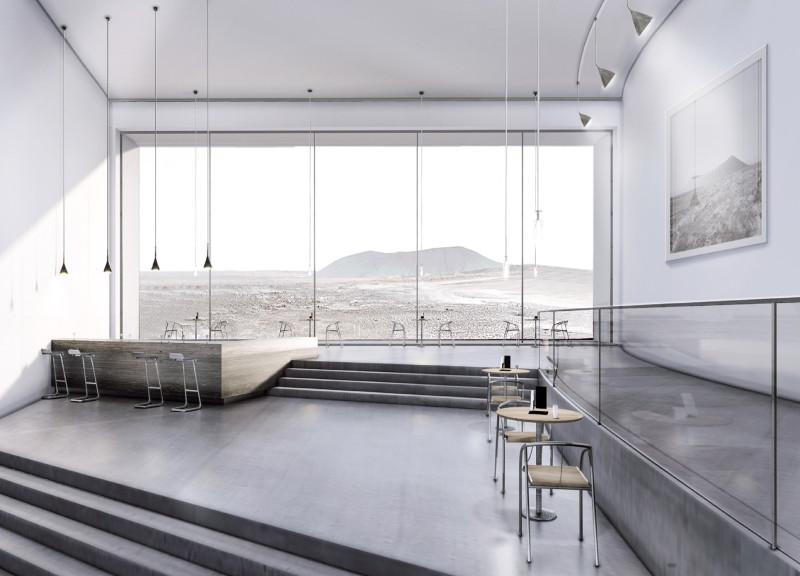5 key facts about this project
From the outset, the architecture of the project demonstrates a clear understanding of spatial organization. The layout has been meticulously crafted to facilitate movement and interaction, with designated areas for gathering, working, and relaxing. Spaces such as common areas are designed to encourage social engagement, equipped with adaptable furniture that can be easily rearranged for various activities or functions. Meanwhile, private spaces offer a tranquil retreat from the busyness of communal life, characterized by large windows that invite natural light and provide views of the surrounding landscape.
The materiality of the project plays a pivotal role in its overall aesthetic and functional success. Concrete is utilized for its structural benefits, ensuring longevity and resilience, while large expanses of glass enhance transparency and reflectivity, seamlessly integrating indoor and outdoor environments. The incorporation of wood adds warmth and tactile quality, creating a welcoming atmosphere. Additionally, steel contributes to the building's modern framework, expressing a contemporary architectural language that resonates with the community. Brick serves as a nod to local building traditions, grounding the new structure in its historical context.
Particular attention has been paid to the landscape surrounding the architecture. The project incorporates native plant species to support local biodiversity and minimize maintenance efforts. Outdoor spaces are designed as extensions of the interior, featuring terraces and gardens that offer residents opportunities for relaxation and recreation. Sustainable design elements such as green roofs not only promote ecological health but also enhance the aesthetic appeal of the project, further integrating it within its environment.
What sets this design apart is its commitment to sustainability and community involvement. By using locally sourced materials and incorporating advanced energy-efficient technologies, the project exemplifies a modern architectural ethos that prioritizes environmental responsibility. Moreover, the design reflects a strong emphasis on community engagement, offering spaces that foster collaboration and social connectivity, which is essential in today's urban context.
As one examines the architectural details, it becomes evident that each element has been carefully considered. From the balance of open and enclosed spaces to the selection of materials that echo regional characteristics, the design reflects a cohesive architectural narrative. By blending traditional and contemporary influences, the architecture not only meets the practical demands of its users but also serves as a cultural touchstone for the community.
For those interested in a deeper understanding of this architectural project, a thorough exploration of its presentation will provide additional insights. Delving into the architectural plans, sections, and design details will further illuminate the distinctive architectural ideas that underpin this endeavor, revealing how such a project can effectively balance modern needs with responsible design practices. Engaging with these elements will enhance appreciation for the thoughtfulness and complexity inherent in contemporary architecture.


 Mingxun Zou,
Mingxun Zou,  Yang Du
Yang Du 




















